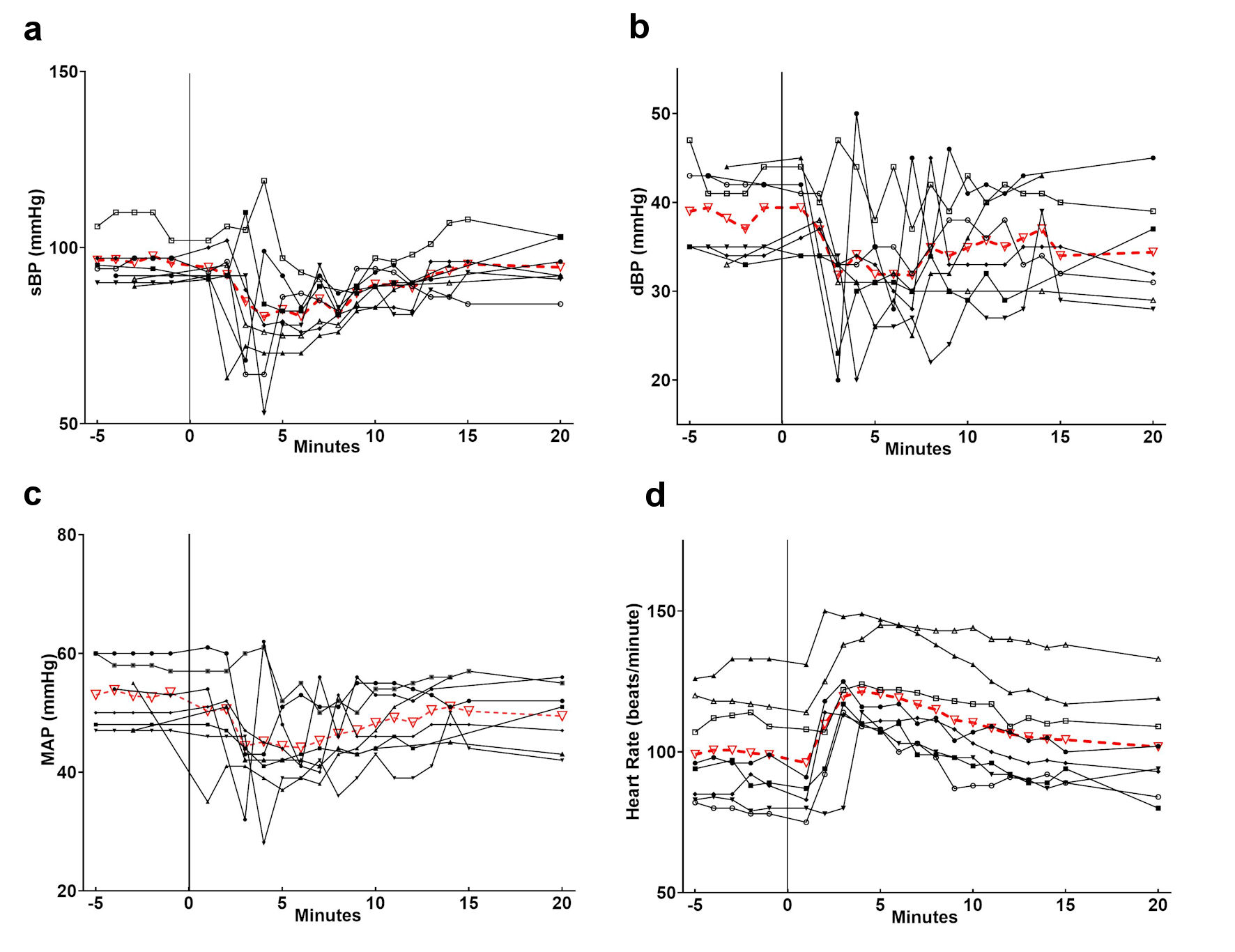| Mean arterial pressure | |
| Number of patients with a decrease ≥ 10 mm Hg | 5 (62.5%) |
| Number of patients with a decrease ≥ 20 mm Hg | 2 (25%) |
| Number of patients with a decrease ≥ 30 mm Hg | 0 (0%) |
| Greatest decrease in mean arterial pressure | 21 mm Hg |
| Systolic blood pressure | |
| Number of patients with a decrease ≥ 10mm Hg | 8 (100%) |
| Number of patients with a decrease ≥ 20 mm Hg | 6 (75%) |
| Number of patients with a decrease ≥ 30 mm Hg | 2 (25%) |
| Greatest decrease in systolic blood pressure | 37 mm Hg |
| Diastolic blood pressure | |
| Number of patients with a decrease ≥ 10mm Hg | 5 (62.5%) |
| Number of patients with a decrease ≥ 20 mm Hg | 1 (12.5%) |
| Greatest decrease in diastolic blood pressure | 22 mm Hg |
| Heart rate | |
| Number of patients with increase ≥ 20 beats/min | 6 (75%) |
| Number of patients with increase ≥ 30 beats/min | 2 (25%) |
| Number of patients with increase ≥ 40 beats/min | 0 (0%) |
| Greatest increase in heart rate | 36 beats/min |
